Department of Surveys and Exhibits: Activities and Publications
About This Book
A compilation of various surveys carried out by the RSF Department of Survey and Exhibits in 1915.
A compilation of various surveys carried out by the RSF Department of Survey and Exhibits in 1915.
This volume was published as part of The Pittsburgh Survey, edited by Paul Underwood Kellogg.
MARGARET F. BYINGTON was associate director of the Charity Organization Department of the Russell Sage Foundation.
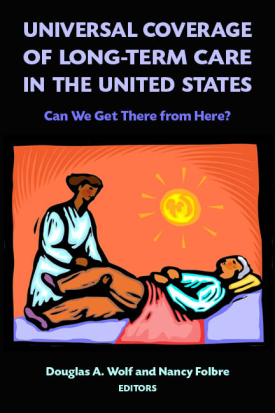
As millions of baby boomers retire and age in the coming years, more American families will confront difficult choices about the long-term care of their loved ones. The swelling ranks of the disabled and elderly who need such support—including home care, adult day care, or a nursing home stay—must often interact with a strained, inequitable and expensive system. How will American society and policy adapt to this demographic transition?
In Universal Coverage of Long-Term Care in the United States, editors Nancy Folbre and Douglas Wolf and an acclaimed group of care researchers offers a much-needed assessment of current U.S. long-term care policies, the problems facing more comprehensive reform, and what can be learned from other countries facing similar care demands. After the high-profile suspension of the Obama Administration’s public long-term insurance program in 2011, this volume, the Foundation’s first free e-book, includes concrete suggestions for moving policy toward a more affordable and universal long-term care coverage in America.
David Bell is a Professor of Economics in the Stirling Management School at the University of Stirling, Stirling, Scotland.
Alison Bowes is a Professor in the School of Applied Social Science at the University of Stirling, Stirling, Scotland.
Leonard Burman is the Daniel P. Moynihan Professor of Public Affairs in the Maxwell School of Citizenship and Public Affairs of Syracuse University, Syracuse, New York.
Brian Burwell is Vice President for Community Living Systems at Thomson Reuters, Cambridge, Massachusetts.
Marc A. Cohen is Chief Research and Development Officer of LifePlans, Inc., in Waltham, Massachusetts.
Svein Olav Daatland is Senior Researcher at NOVA/Norwegian Social Research, in Oslo, Norway.
Nancy Folbre is a Professor of Economics at the University of Massachusetts at Amherst.
Mary Jo Gibson, formerly a Strategic Policy Adviser at AARP's Public Policy Institute, is a long-term care consultant.
Howard Gleckman is a Resident Fellow at The Urban Institute, where he is affiliated with both the Tax Policy Center and the Program on Retirement Policy.
Robert Hudson is Professor and Chair of Social Welfare Policy in Boston University’s School of Social Work.
Carol Levine is Director of the Families and Health Project at the United Hospital Fund, New York City.
David Stevenson is an Associate Professor of Health Policy in the Department of Health Care Policy at Harvard Medical School.
Robyn Stone is Executive Director of the Center for Applied Research and Senior Vice President of LeadingAge in Washington, D.C.
Eileen J. Tell is Senior Vice President of Univita (formerly the Long Term Care Group, Inc.), in Natick, Massachusetts.
Douglas Wolf is the Gerald B. Cramer Professor of Aging Studies and Director of the Center for Aging and Policy Studies at Syracuse
Robyn I. Stone discusses the long-term care workforce in America, its challenges and potential reforms for improvement. Read the Interview
Carol Levine discusses her personal experience as a family caregiver, and how policy must change to better support friends and family who offer unpaid care. Read the Interview
Douglas Wolf offers an overview of Universal Coverage and outlines possible reforms to improve the provision of long-term care in America. Read the Interview
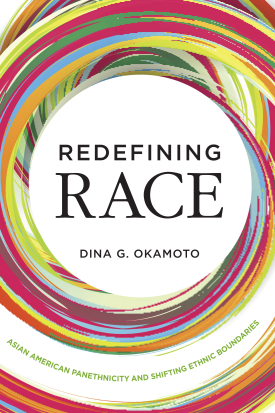
Winner of the 2016 American Sociological Association’s Asia and Asian America Section Book Award
“In this well written and wide ranging book, Dina Okamoto puts forward a new theory describing the relationship between race, ethnicity, and assimilation among Asian Americans. This provocative racial boundary approach to understanding the identities and the incorporation of Asian Americans is a sophisticated and welcome contribution to the field. Using the case of Asian Americans it contributes to our understanding of the concepts and changing nature of race and ethnicity in general.”
—MARY C. WATERS, M.E. Zukerman Professor of Sociology, Harvard University
“Redefining Race redefines our understanding of the making of Asian America. By carefully articulating a theory of panethnicity as a process of shaping and shifting group boundaries, collecting data apposite to that theory, and designing demanding empirical tests, Okamoto expertly shows that Americans of diverse Asian backgrounds did not become panethnic overnight and ex nihilo as a passive response to state- constructed racial categories. Rather, Okamoto presents a vivid account of the accidents, opportunities, and contexts that fire up panethnic moments of collective action and douse them back into quiescence. Redefining Race is a major advancement and original contribution to the fields of immigrant incorporation, racial and ethnic formation, and Asian American studies.”
—TAEKU LEE, professor of political science and professor of law, University of California, Berkeley
“Through a sophisticated marshaling of theory and evidence from historical archives, interviews and social surveys, Dina Okamoto demonstrates how Americans of Japanese, Filipino, Korean, Chinese, Indian, Vietnamese, and other origins created an Asian American identity and Asian American institutions in the last quarter of the twentieth century. Despite disparate languages and conflicting histories, leaders of ethnic organizations defined by their nation of origin and others would strategically organize along panethnic lines when they found common interests rather than simply respond to the wider American society’s imposition of race. Okamoto’s Redefining Race is a new benchmark for understanding the social construction of ethnicity and ethnic identity.”
—EDWARD TELLES, professor of sociology, Princeton University
In 2012, the Pew Research Center issued a report that named Asian Americans as the “highest-income, best-educated, and fastest-growing racial group in the United States.” Despite this optimistic conclusion, over thirty Asian American advocacy groups challenged the findings, noting that the term “Asian American” is complicated. It includes a wide range of ethnicities, national origins, and languages, and encompasses groups that differ greatly in their economic and social status. In Redefining Race, sociologist Dina G. Okamoto traces the complex evolution of “Asian American” as a panethnic label and identity, emphasizing how it is a deliberate social achievement negotiated by group members, rather than an organic and inevitable process.
Drawing on original research and a series of interviews, Okamoto investigates how different Asian ethnic groups created this collective identity in the wake of the Civil Rights movement in the 1960s. Okamoto documents the social forces that encouraged the development of this panethnic identity. The racial segregation of Asians in similar occupations and industries, for example, produced a shared experience of racial discrimination, which led Asians of different national origins to develop shared interests and identities. By constructing a panethnic label and identity, ethnic group members created their own collective histories, and in the process challenged and redefined current notions of race.
The emergence of a panethnic racial identity also depended, somewhat paradoxically, on different groups organizing along distinct ethnic lines to gain recognition and rights from the larger society. According to Okamoto, ethnic organizations provided the foundation necessary to build solidarity within different Asian-origin communities. Leaders and community members who created inclusive narratives and advocated policies that benefited groups beyond their own moved their discrete ethnic organizations toward a panethnic model. For example, a number of ethnic-specific organizations in San Francisco expanded their services and programs to include other ethnic group members after their original constituencies dwindled in size or assimilated. A Laotian organization included refugees from different parts of Asia, a Japanese organization began to advocate for South Asian populations, and a Chinese organization opened its doors to Filipinos and Vietnamese. As Okamoto shows, the process of building ties between ethnic communities while also recognizing ethnic diversity is the hallmark of panethnicity.
Redefining Race is a groundbreaking analysis of the processes through which group boundaries are drawn and contested. In mapping the genesis of a panethnic Asian American identity, Okamoto illustrates the ways in which concepts of race continue to shape how ethnic and immigrant groups view themselves and organize for representation in the public arena.
DINA G. OKAMOTO is an associate professor of sociology and director of the Center for Research on Race and Ethnicity in Society at Indiana University.
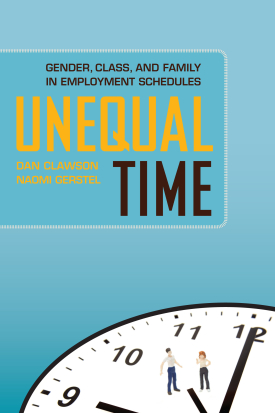
Winner of the 2015 Max Weber Award from the Organizations, Occupations, and Work Section of the American Sociological Association
Winner of the 2015 William T. Goode Distinguished Book Award from the Family Section of the American Sociological Association
Winner of the 2015 Distinguished Scholarly Book Award from the Labor and Labor Movements Section of the American Sociological Association
“How long is the workday, and how thick the paycheck? To these questions, scholars have offered answers. But the key questions, Dan Clawson and Naomi Gerstel propose in this fascinating book, are: how shielded are we from unpredictable demands? And how do we control the unpredictability we’re made to face? Comparing doctors, nurses, EMTs and nursing assistants, men and women, the authors explore the lives of the ‘haves’ and ‘have-nots’ of such control, as well as the friends, co-workers and family on whom they call to create orderly lives in an increasingly disorderly world. A thought-provoking and very important read.”
—Arlie Hochschild, professor emerita, University of California, Berkeley
“Unequal Time is a meticulously and creatively researched study of how time at home and work is understood and managed. Time is not only an individual possession, but is relational. ‘Normal unpredictability’ rules. Dan Clawson and Naomi Gerstel explore the gaps between the rhetoric and realities of workplace flexibility. They find that flexibility is not just a matter of choice, but power.”
—Robert Aronowitz, M.D., professor and chair, History and Sociology of Science,
University of Pennsylvania
“Dan Clawson and Naomi Gerstel provide a powerful account of how inequalities are at the core of many of the vexing problems of work and family. Based on in-depth multi-method research in the health care industry, and this compelling book will change the way you think about work time issues. Essential reading for scholars and practitioners alike.”
—Juliet Schor, professor of sociology, Boston College
“This book's careful research design pays enormous dividends: comparing four critical occupations in the health care sector, Dan Clawson and Naomi Gerstel generate important new insights into the ways class and gender inequalities interact to shape struggles for control over working time. Unequal Time demonstrates that gender and class advantage and disadvantage are deeply implicated in the dynamics of ‘work-family balance’ and ‘flexibility,’ complicating the conventional wisdom in a provocative and fruitful way. This book is indispensable for scholars, policymakers, and anyone who cares about working families.”
—Ruth Milkman, professor of sociology, The Graduate Center, CUNY
Life is routinely unpredictable. Control over one's time is a critical resource for managing that unpredictability, keeping a job, and raising a family. But the ability to control one's time, much like one's income, is determined to a significant degree by both gender and class. In Unequal Time, sociologists Dan Clawson and Naomi Gerstel explore the ways in which social inequalities permeate the workplace, reverberating through a web of time in which the schedules of one person shape the schedules of others in ways that exemplify and often exacerbate differences between men and women, the privileged and disadvantaged.
Unequal Time investigates the connected schedules of four health sector occupations: professional doctors and nurses, and working-class EMTs and nursing assistants. While the work-family literature mostly examines the hours people work, Clawson and Gerstel delve into the process through which schedules are set, negotiated, and contested. They show how workers in all four occupations experience the effects of schedule uncertainty but do so in distinct ways, largely shaped by the intersection of gender and class. Doctors, who are largely male and professional, have significant control over their schedules, though they often claim otherwise, and tend to work long hours because they earn respect from their peers for doing so. By contrast, nursing assistants, primarily female and working-class, work demanding hours because they face penalties for taking time off, no matter how valid the reasons. Without institutional support, they often turn to co-workers to help create more orderly lives.
Unequal Time shows that the degree of control that workers hold over their schedules can either reinforce or challenge conventional gender roles. When male doctors work overtime, they often rely on their wives and domestic workers to care for their families. Female nurses are more likely to handle the bulk of their family responsibilities, and use the control they have over their work schedules to dedicate more time to home life. Surprisingly, the authors find that in the working class occupations, workers frequently undermine traditional gender roles. Male EMTs often take significant time off for child care, and female nursing assistants sometimes choose to work more hours to provide extra financial support for their families. Employers often underscore these disparities by allowing their upper-tier workers the flexibility that enables their gender roles at home, while low-wage workers are pressured to put their jobs before any unpredictable events they might face outside of work.
We tend to consider personal and work scheduling an individual affair, but Clawson and Gerstel put forward the provocative hypothesis that time in the workplace is both collective and highly unequal. A valuable resource for workers' advocates and policymakers alike, Unequal Time illustrates how social inequalities in the workplace shape the lives of workers and their families.
DAN CLAWSON is professor of sociology at the University of Massachusetts, Amherst.
NAOMI GERSTEL is a distinguished university professor of sociology at the University of Massachusetts, Amherst.
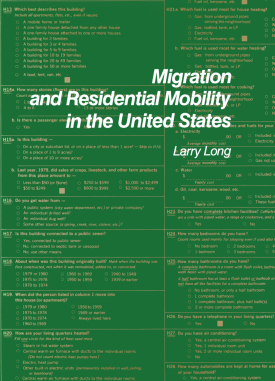
Americans have a reputation for moving often and far, for being committed to careers or lifestyles, not place. Now, with curtailed fertility, residential mobility plays an even more important role in the composition of local populations—and by extension, helps shape local and national economic trends, social service requirements, and political constituencies.
In Migration and Residential Mobility in the United States, Larry Long integrates diverse census and survey data and draws on many academic disciplines to offer a uniquely comprehensive view of internal migration patterns since the 1930s. Long describes an American population that lives up to its reputation for high mobility, but he also reports a surprising recent decline in interstate migration and an unexpected fluctuation in the migration balance toward nonmetropolitan areas. He provides unprecedented insight into reasons for moving and explores return and repeat migration, regional balance, changing migration flows of blacks and whites, and the policy implications of movement by low-income populations.
How often, how far, and why people move are important considerations in characterizing the lifestyles of individuals and the nature of social institutions. This volume illuminates the extent and direction, as well as the causes and consequences, of population turnover in the United States.
A Volume in the RSF Census Series
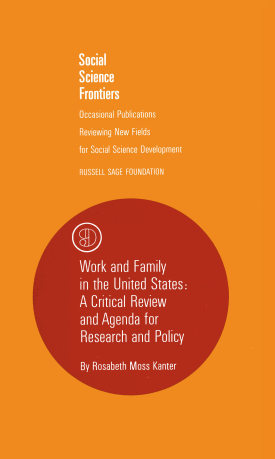
Now considered a classic in the field, this book first called attention to what Kanter has referred to as the "myth of separate worlds." Rosabeth Moss Kanter was one of the first to argue that the assumes separation between work and family was a myth and that research must explore the linkages between these two roles.
ROSABETH MOSS KANTER holds the Ernest L. Arbuckle Professorship at Harvard Business School, where she specializes in strategy, innovation, and leadership for change.
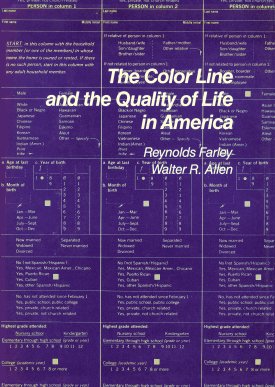
Is the United States a nation divided by the “color line,” as W.E.B. Dubois declared? What is the impact of race on the lives of Americans today? In this powerful new assessment of the social reality of race, Reynolds Farley and Walter Allen compare demographic, social, and economic characteristics of blacks and whites to discover how and to what extent racial identity influences opportunities and outcomes in our society. They conclude that despite areas of considerable gain, black Americans continue to be substantially disadvantaged relative to whites.
REYNOLDS FARLEY is professor of sociology at the University of Michigan and research scientist at its Population Studies Center.
A Volume in the RSF Census Series
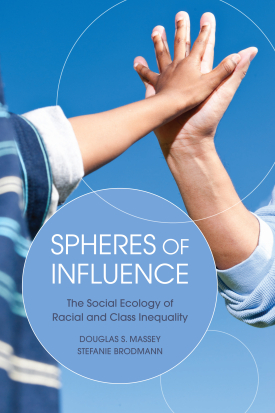
“Douglas Massey and Stefanie Brodmann provide an ambitious and rigorous examination of how inequality exerts its influence in the lives of young Americans. Analyzing a national longitudinal study and focusing on multiple social contexts—including school, religion, peers, and neighborhoods—the authors discover important new facts and evaluate competing explanations for a diverse set of outcomes. Whether about depression, crime, sexual behavior, obesity, drinking, or human capital attainment, the results are fascinating. Spheres of Influence should be required reading for social scientists and policymakers seeking comprehensive knowledge on the social ecology of class and race inequality.”
—Robert J. Sampson, Henry Ford II Professor of the Social Sciences, Harvard University
“Spheres of Influence is a pathbreaking book exposing the vast complexities in how race and class intersect in affecting development and well-being as people move from adolescence into adulthood in the United States. The comprehensiveness of the theory and findings about the ways that highly diverse social ecologies of family, school, neighborhood, peers, and religion set the stage for vast inequalities in social outcomes is unparalleled.”
—Lauren J. Krivo, professor of sociology and criminal Justice, Rutgers University
The black-white divide has long haunted the United States as a driving force behind social inequality. Yet, the civil rights movement, the increase in immigration, and the restructuring of the economy in favor of the rich over the last several decades have begun to alter the contours of inequality. Spheres of Influence, co-authored by noted social scientists Douglas S. Massey and Stefanie Brodmann, presents a rigorous new study of the intersections of racial and class disparities today. Massey and Brodmann argue that despite the persistence of potent racial inequality, class effects are drastically transforming social stratification in America.
This data-intensive volume examines the differences in access to material, symbolic, and emotional resources across major racial groups. The authors find that the effects of racial inequality are exacerbated by the class differences within racial groups. For example, when measuring family incomes solely according to race, Massey and Brodmann found that black families’ average income measured $28,400, compared to Hispanic families’ $35,200. But this gap was amplified significantly when class differences within each group were taken into account. With class factored in, inequality across blacks’ and Hispanics’ family incomes increased by a factor of almost four, with lower class black families earning an average income of only $9,300 compared to $97,000 for upper class Hispanics. Massey and Brodmann found similar interactions between class and racial effects on the distribution of symbolic resources, such as occupational status, and emotional resources, such as the presence of a biological father—across racial groups. Although there are racial differences in each group’s access to these resources, like income, these disparities are even more pronounced once class is factored in.
The complex interactions between race and class are apparent in other social spheres, such as health and education. In looking at health disparities across groups, Massey and Brodmann observed no single class effect on the propensity to smoke cigarettes. Among whites, cigarette smoking declined with rising class standing, whereas among Hispanics it increased as class rose. Among Asians and blacks, there was no class difference at all. Similarly, the authors found no single effect of race alone on health: Health differences between whites, Asians, Hispanics, and blacks were small and non-significant in the upper class, but among those in the lower class, intergroup differences were pronounced.
As Massey and Brodmann show, in the United States, a growing kaleidoscope of race-class interactions has replaced pure racial and class disadvantages. By advancing an ecological model of human development that considers the dynamics of race and class across multiple social spheres, Spheres of Influence sheds important light on the factors that are currently driving inequality today.
DOUGLAS S. MASSEY is Henry G. Bryant Professor of Sociology and Public Affairs at the Woodrow Wilson School.
STEFANIE BRODMANN is an economist at the Social Protection and Labor Unit of the World Bank.

Health and medical services should meet individuals’ needs regardless of gender, but in both subtle and overt ways this is very often not the case. Gender biases result not only in flawed access to care but also in insufficient medical research, uninformed diagnoses, and gaps in covering critical needs.
In Health Care and Gender, Charlotte Muller provides a contemporary assessment of the forces that sustain gender biases in the health and medical professions. Beginning with an analysis of gender comparisons in health care usage and adequacy of treatment, Muller discusses the experiences of many different women: working women with insurance coverage, the poor dependent on Medicaid, and the elderly. She also focuses on the issues facing women of reproductive age and shows how poverty or extremely volatile political and ethical controversy may impede their search for basic maternity and family planning services.
Drawing on a large body of evidence from medical, health, and behavioral literature and from national statistics, Health Care and Gender probes a timely and crucial topic. For scholars, analysts, and policy makers interested in women’s studies, health and medical care, gerontology, consumer and labor economics, and social justice. Muller’s thorough analysis looks to the future by presenting agendas for reform, research, and evaluation.
CHARLOTTE F. MULLER is director of the Divisions of Health Economics, Department of Community Medicine, and the professor in the Ritter Department of Geriatrics and Adult Medicine at the Mount Sinai School of Medicine.